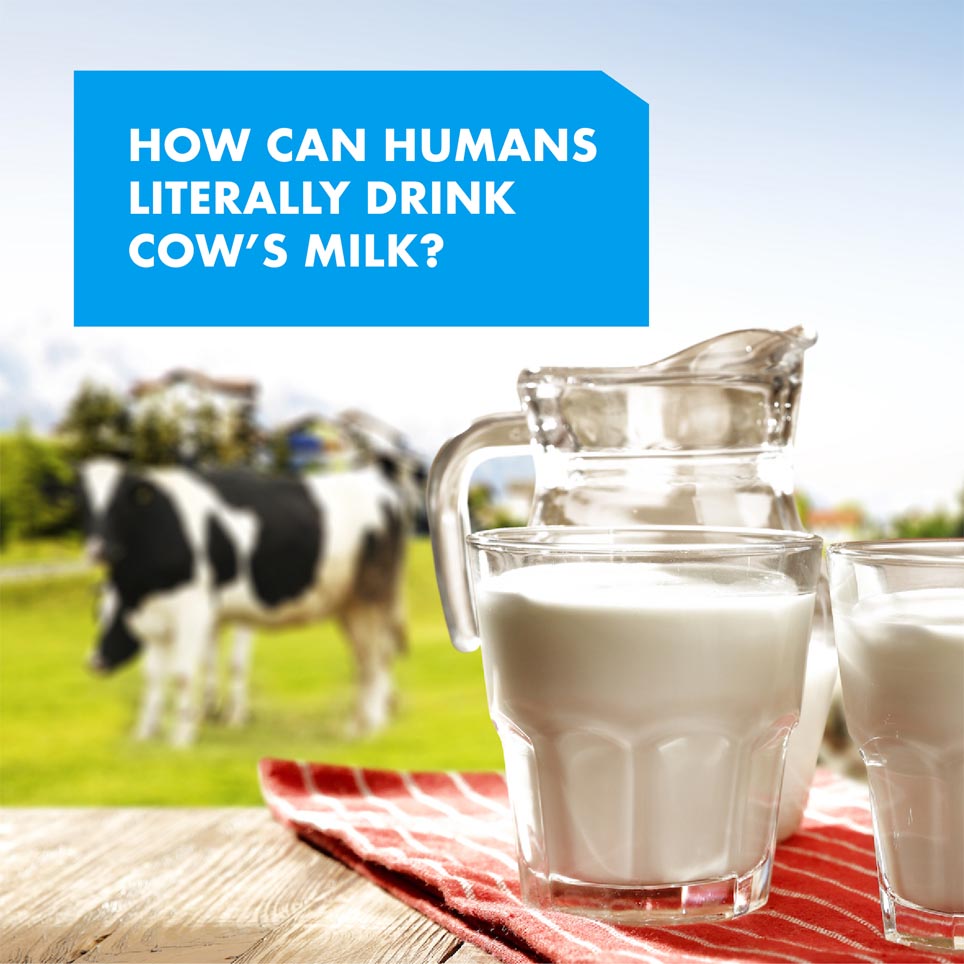
How Can Humans Literally Drink Cow’s Milk?
All about UHT
Almost everyone loves milk, and it is the first thing we consume after we were born, and it’s including cow’s milk. Milk is full of protein, vitamins, and minerals. But do you ever wonder how can we drink cow’s milk that literally stays fresh for months? Or do you even notice that some milk is not refrigerated in the supermarket either, but they can be long-lasting?
The answer is the cow’s milk you drink has been treated in special ways to help it last longer outside a refrigerator or cooled environment. It has most likely been heated to at least 135ºC (275°F) for two to four seconds and stored in special packaging before it reaches your mouth.
That process kills off harmful bacteria and helps ensure that you don’t get diseases like tuberculosis, listeriotic, and typhoid fever—this process is called UHT– Ultra High Temperature. Thanks to Louis Pasteur, who pioneered the idea.
What is UHT?
As it said before, UHT stands for Ultra High-Temperature Pasteurization (also referred to as Ultra Pasteurization or UP). UHT milk goes through ultra-pasteurization, which safely heats the milk to a higher-than-usual temperature. Like regular pasteurization, this process kills bacteria in the milk that may be harmful or cause the milk to spoil, producing milk with longer life. It’s then packaged in sterilized containers, also known as aseptic packaging, which helps keep the milk fresher longer.
UHT milk can sit out unrefrigerated for about three months, and this can vary by brand. Once the container is opened, the milk should be refrigerated and has the same shelf life as other milk (seven to ten days).
The process has gained traction in the past half-century or so. Although ultra-heat-treated milk hasn’t really caught on in several countries, it is popular in Asia, where milk consumption has recently taken off, according to an intriguing BBC report.
The torching milk undergoes as part of the ultra-heating process changes its chemical composition in a couple of interesting ways that set it apart from the milk we’re used to drinking. For one, the taste is different. Ultra-heat-treated milk is generally sweeter, a bit more gelatinous, and sometimes more sulfurous than regular milk. The other difference is that heating milk at such a high temperature throws its proteins into disarray, which makes it difficult to produce cheese.
But what about nutrition — surely this higher temperature must destroy vitamins and other molecules? While there are some very minor changes, all of the major governmental and nutritional sites, including the US CDC; the European Union; and New Zealand all state the same essential facts, summed up by the US CDC: “all of the nutritional benefits of drinking milk are available from pasteurized milk without the risk of disease that comes with drinking raw milk.”
UHT milk is a well‐established technology in many countries. Direct and indirect heating systems are used along with sterile packages and form‐fill‐seal systems. Advantages of UHT milk include reduced energy consumption, extended shelf life, and ambient storage and distribution conditions. Or if you need to stock up or don’t like to go shopping that often, UHT milk is the answer.
The fact that this process can make milk last longer is interesting. It could help a lot of people in a different country to drink fresh milk whenever and wherever they are. Are you interested to create a new technology like UHT? Or do you want to be a food scientist that produce this kind of technology? Or do you want to know how our traditional food may become a global commodity? Get your international experience in learning about food science, technology, and industry in SGU Food Technology!
Swiss German University’s Food Technology Program Study offers the opportunity to join a fast-growing food industry. A unique combination of theoretical knowledge and hands-on experiences gained during two internships, in Indonesia and Germany, provide our graduates with appropriate skills in science and technology, together with creative and innovative flair.
Students, not only learn about farm-to-fork science but also engineering and business. Here, we learn how to run and also create an industry that will feed more people with safe, tasty, and healthy food.
The Food Technology SGU curriculum is defined by the Indonesian Association of Food Technologists and the Institute of Food Technologists.
SGU Food Technology offers 2 curricula:
- Single Degree
- Double Degree at Albstadt-Sigmaringen University or Fachhochschule Südwestfalen
Download our curriculum by clicking the button at the end of this article.
What are you waiting for, study Food Technology at SGU. Contact our consultant to find out more!
About SGU
SWISS GERMAN UNIVERSITY (SGU) is an international university in Indonesia, was established in 2000 as a joint effort between Indonesia, Germany, Switzerland, and Austria. We are the pioneer in offering international curricula in Indonesia. Qualified students can graduate with a Double Degree from Indonesia and Germany, which SGU provides in cooperation with partner universities; surely a valuable tool for your future careers. Ever since its establishment, SGU has been dedicated to delivering quality education in line with international standards and aims to develop skilled professionals who meet the demands of the industry. In order to achieve its objectives, SGU offers quality-oriented learning through 12 Bachelor’s Degree Programs and 4 Master’s Degree Programs ranging from Engineering, Information Technology, and Business to Life Sciences and Social Sciences. Furthermore, with small class sizes, and with English as the medium of instruction, you can look forward to pursuing your tertiary education and degree with full confidence.
Curriculum Single Degree Curriculum Double Degree Back
